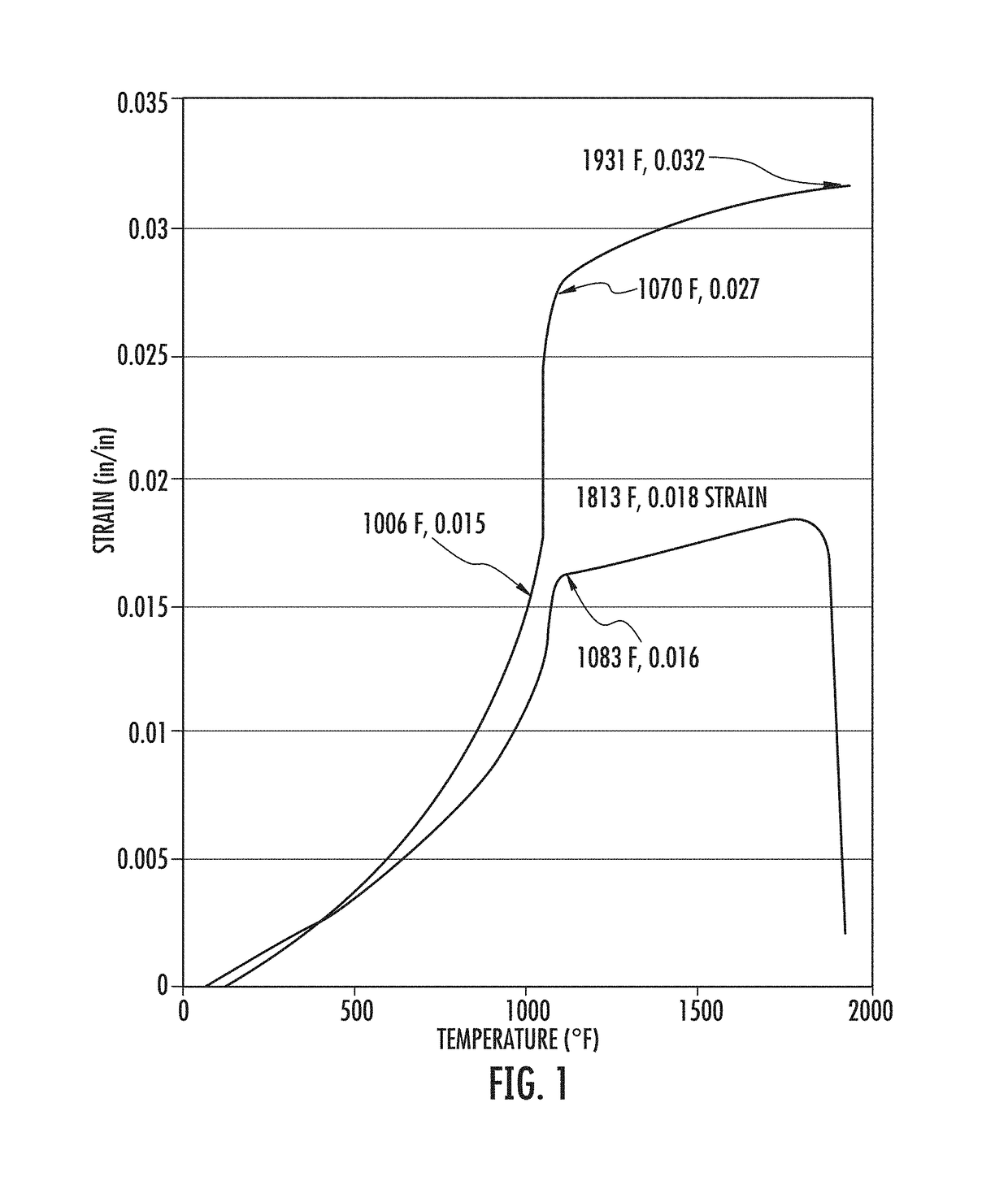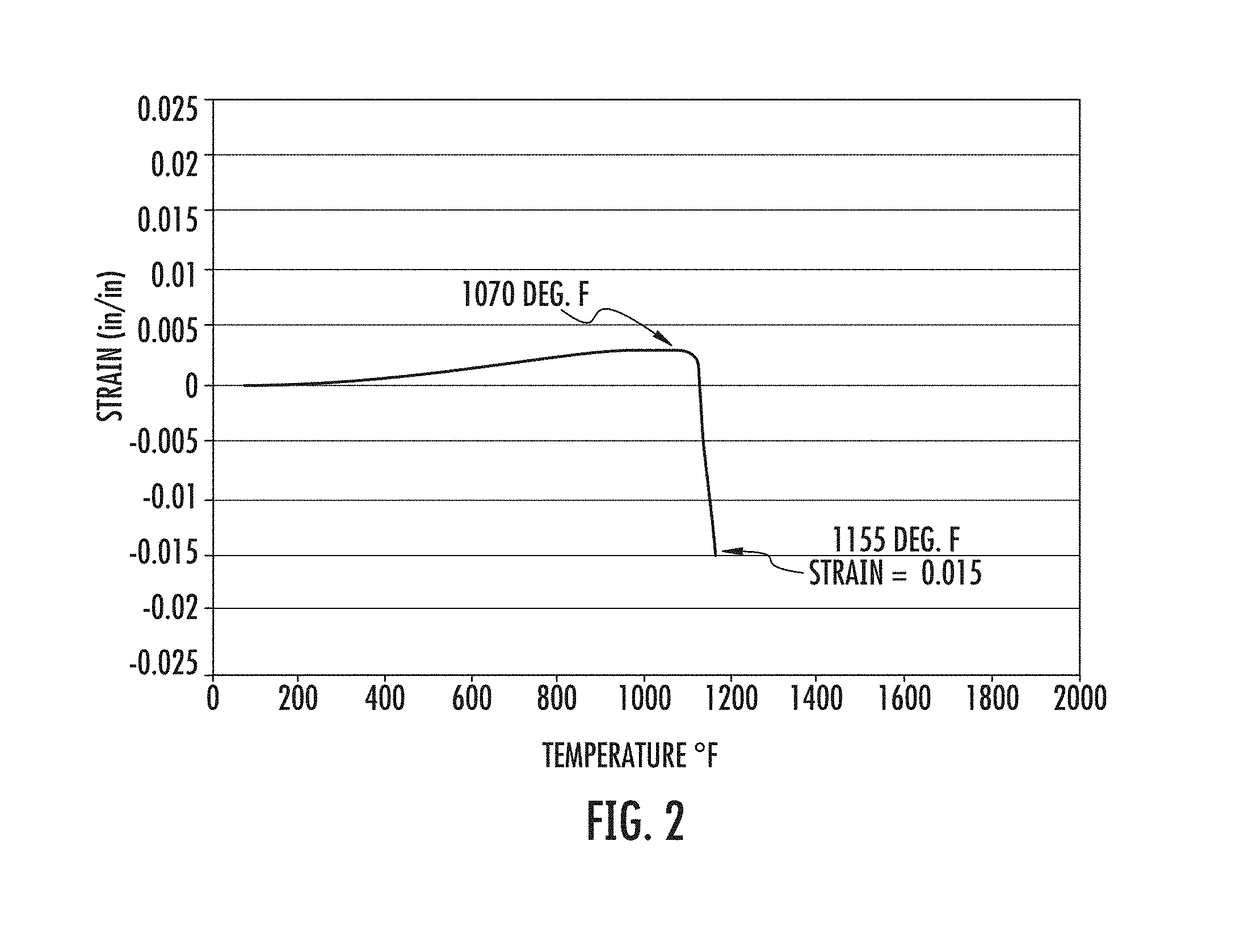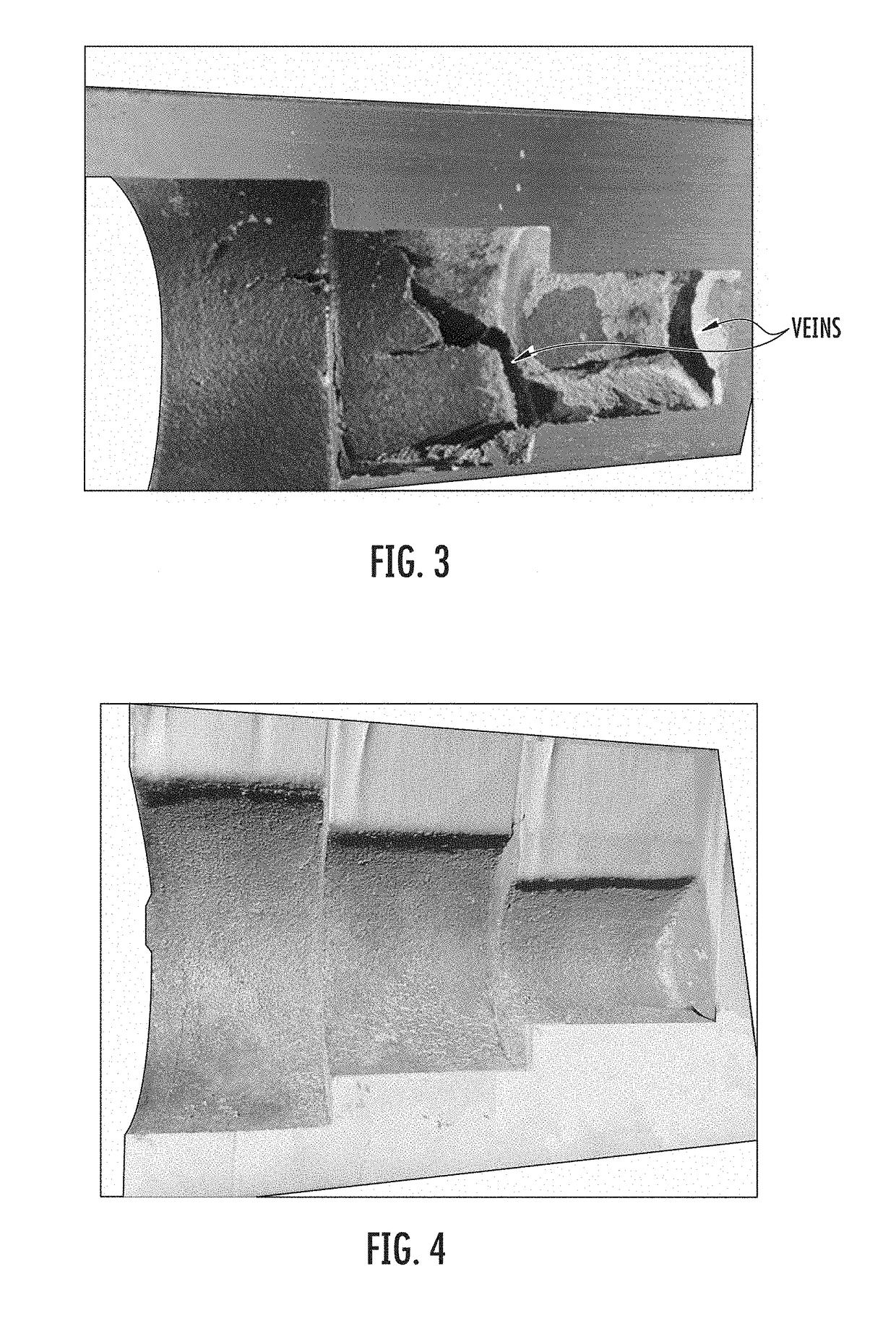Anti-Veining Additive for Silica Sand Mold
- Summary
- Abstract
- Description
- Claims
- Application Information
AI Technical Summary
Benefits of technology
Problems solved by technology
Method used
Image
Examples
Embodiment Construction
[0030]An additive to foundry sand molding and core aggregates is used to produce sand cores and molds. The additive requires no carbon addition and is unreactive with most foundry sand binders. The additive produces a sand-based foundry molding and core aggregate which resists the formation of some of the defects commonly associated with the production of castings in silica sand-based molding and core aggregates. In particular, the additive improves the surface quality of castings by reducing thermal expansion defects, i.e. vein, in iron, steel, brass and bronze castings. In some instances it may be beneficial for use in aluminum castings, but in general, veins are not nearly as serious a problem in aluminum castings as they are in iron and steel castings.
[0031]The first curvilinear line in FIG. 1 illustrates the coefficient of thermal expansion of a PUCB bonded silica sand. The phenolic urethane binder is the same binder employed throughout the North America foundry industry. PUCB ...
PUM
 Login to View More
Login to View More Abstract
Description
Claims
Application Information
 Login to View More
Login to View More - R&D
- Intellectual Property
- Life Sciences
- Materials
- Tech Scout
- Unparalleled Data Quality
- Higher Quality Content
- 60% Fewer Hallucinations
Browse by: Latest US Patents, China's latest patents, Technical Efficacy Thesaurus, Application Domain, Technology Topic, Popular Technical Reports.
© 2025 PatSnap. All rights reserved.Legal|Privacy policy|Modern Slavery Act Transparency Statement|Sitemap|About US| Contact US: help@patsnap.com



